Menu Engineering: Ultimate Guide for your Restaurant Order Profitability

Ira Jain, Customer Success Manager, EagleOwl
Product Specialist
June 5, 2021 | 10 min read
When was the last time you worked on your menu selection and pricing? As ingredient and labor costs increase, culinary trends change, new recipes gain popularity or even when you start taking inflation into account, your menu can’t remain the same.
However, even regular revisions won’t make any sense if you disregard recipe contribution margin, dish popularity and pricing best practices and don’t use psychological tricks to increase your average order value.
That’s when menu engineering - a structured process to maximize menu popularity and profitability - takes the stage.
Keep on reading to know:
-What is menu engineering?
-Who is responsible for menu selection and pricing?
-What stages does the menu development process include?
-Real examples of successful, profitable menus
What is menu engineering?
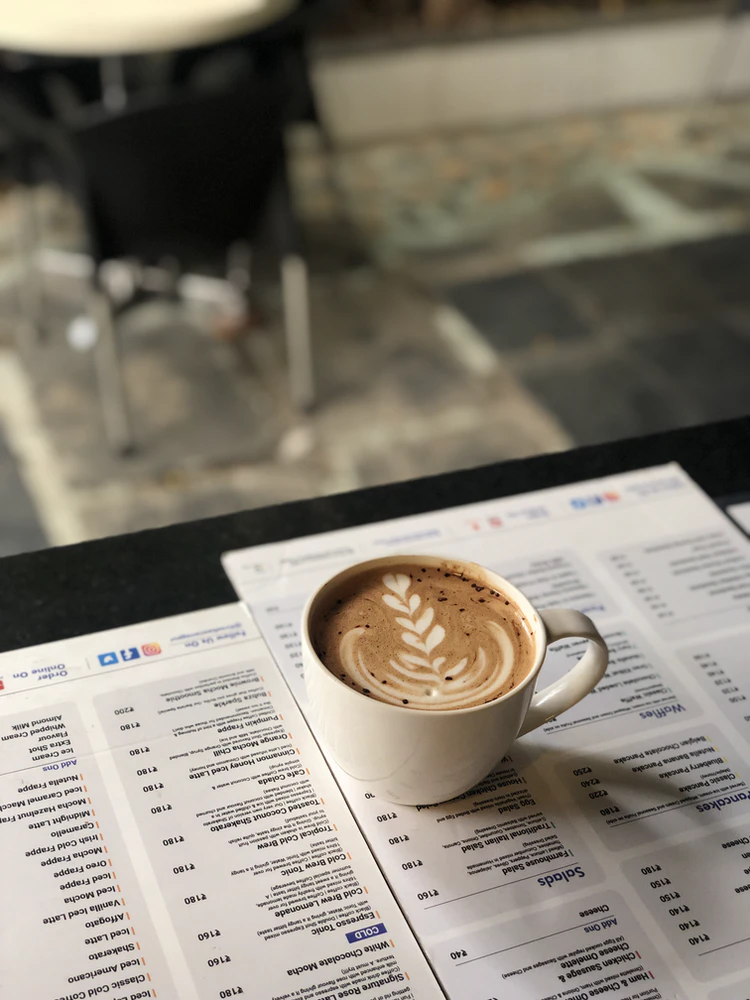
Menu engineering is the strategic process of positioning and pricing your menu items that ultimately leads to increased restaurant popularity and profitability. It helps you affect the customer’s decisions and draw their attention to recipes you want them to order.
More benefits that menu engineering provides:
1. Understand which menu items are the most popular and which ones need to be removed or promoted more actively (the menu engineering graph below shows the 4 menu item categories that point to the profitability vs popularity of the recipe. More about it in the next section).
2. Evaluate which menu items are overpriced or underpriced.
3. See whether there’s a need to change ingredients, revise portion sizes etc.
And it doesn’t matter whether you are a small restaurant or a multi-chain restaurant, your menu needs to keep certain rules in mind. It also doesn’t matter whether your menu is printed or digital. The process is applicable for all kinds of restaurants and menu types.
Who is the menu engineer in a restaurant? How often should you revise your menu?

If you use a restaurant management software , it will automatically calculate the recipe cost based on each ingredient. But you also need someone in the team who will turn raw data into decisions and understand how to reflect those insights in the menu.
The person who is responsible for the menu engineering process is usually the restaurant manager. It can also be the Executive Chef based on the size of the organization. They are usually the ones who are best informed about the ingredient cost, availability issues, food cost and dish popularity. However, the restaurant may also hire an outsourced consultant or a restaurant consulting firm to help with design, psychology and pricing best practices.
Some restaurants do menu revisions on a regular basis - once a year or a few months - to see where and how they can make improvements. Some restaurants also do temporary menu introductions for events, festivals and other special occasions. Even after an A to Z revision everything might seem to be fixed, there’s always room for small tweaks. Such small tweaks can lead to a profit increase by up to 10% and insights from past sales data will be immensely helpful..
Whether it’s because of laziness or convenience, consumer preferences grow towards spending less time in the kitchen and ordering more food online.
Steve Klatt, Owner of Braised in the South says :

“Since opening our brick & mortar location in September of 2020 we have made a number of changes to our menu/operations including; removing underperforming menu items and adding beer and wine, a daily happy hour menu, and a Sunday Brunch menu including an extended drink menu.
The addition of online ordering and our Family Style meal deals has also been a game changer for us”.
Shawn Soole from Soole Hospitality Concepts does menu revisions regularly and here’s why:

“I do menu recosting and revisions every quarter as part of the quarterly review. It makes sure that ingredients in the kitchen haven't drastically changed in price (which they do regularly) and that all dishes and drinks (especially cocktails) are priced as aggressively as possible.
If you don't do it regularly, you can quickly have a dish or a cocktail and become a loss leader from a money maker. I wouldn't push it past two quarters to review these things”.
Kapil Hinduja, CEO of Happy Belly Bakes says :
“EagleOwl has been very handy in dispatching our ingredients. As a result of using the tool and uploading all our menus and ingredients into this tool we have had approximately 30% saving in our ingredient cost.”
Looking for a better way to manage costs?
Here’s how EagleOwl_Macaw solves all your cost management related problems for a seamless back-of-house experience.
Profitability Analysis

There’s no one tip or secret that will solve your restaurant problems and instantly increase the profitability. Reaching a stage where your restaurant is growing month over month requires a set of best practices to follow and experience that’s accumulated only through trials and errors.
Below we have 4 tips that will point you in the right direction:
#1 Know the average restaurant profit margins
According to azcentral, the average profit margin for a fast food restaurant is between 6%-9%. These types of restaurants usually need a small staff to operate and the ingredients are cheaper.
The profit margin for full-service restaurants is between 3-5%. Lower profit margins are associated with high employee and location costs.
Depending on what type of food you serve, you can see whether you are within the average profit margin or not.
If your profit margins are far lower than the industry average, your restaurant quickly needs to implement optimization tactics. If your profit margins are a lot higher, your menu items might be overpriced or maybe your restaurant is regarded as an expensive place to spend time.
#2 Analyze your menu and find the most profitable items
Your menu items are the #1 driver of your profitability. And analyzing your profitability starts with analyzing your menu.
If your restaurant has been running for at least a few weeks, you should have already categorized your menu items into
1.Starts (popular and profitable),
2. Plow horses (popular, but unprofitable),
3. Puzzle (profitable, but unpopular), and
4. Dog (unpopular and unprofitable).
Here are a few tips to increase your restaurant profitability based on how your menu performs:
1. Encourage your restaurant visitors to order recipes from Stars or Puzzle by highlighting them on the menu or asking your servers to suggest those items.
2. Try to replace or remove an ingredient from a recipe to decrease the food cost and increase your profits. However, maintaining the food quality is key here.
3. Follow the recommendations by your restaurant management system and see which ingredients are in demand. Avoid ordering a large amount of ingredients that don’t enjoy popularity as they will get close to their use by date and spoil.
#3 Identify where and how you are losing money
The reasons for losing money may vary and even the tiniest redundancies can accumulate, negatively impacting your bottom line.
For example, you can start by analyzing how you design the working schedule for your employees. You might end up noticing that you have too many employees working during down hours. Or you might understand that paying in cash costs you more money than if you paid via a card.
Another aspect to start optimizing is reviewing your list of suppliers. Start negotiating with a few more suppliers to see who is offering more competitive prices.
With this money-saving approach in mind, you should start reviewing all your operations, from staff to suppliers to online tools you are paying for.
#4 Track your profitability with restaurant performance metrics
Tracking your sales performance is probably the most important metric for any restaurant. And you might think you should track and improve only revenue-related-metrics - revenue per table, revenue per hour, etc.
But to increase your sales and profit margins, you need to track non-revenue-related metrics as well because their improvement ultimately leads to sales improvement. They include customer feedback metrics (e.g. complaints per order, positive feedback per order), service metrics (e.g. tables served per waiter, unavailability of menu items), etc.
Here are 3 more metrics that we think any restaurant should track:
1. Cost of goods sold (CoGS) is the amount of money that you spend to prepare your recipes. Calculating it helps you understand the original cost of a recipe and price them accordingly. Here’s the formula:
CoGS = (Beginning inventory of food and beverage) + (Purchases) – (Ending inventory)
2. Labor cost percentage is the percentage of your gross revenue that you spend on salaries and benefits.
While you should aim at reducing this percentage, you should also know that the average labor cost percentage in the F&B industry is 22-40%.
Too low percentage might show that your restaurant is understaffed, so you should track not only the percentage but the reasons as well. Here’s the formula:
Labor Cost Percentage = Labor / sales
3. Net profit is the money that your restaurant earns after covering all expenses. Expenses include food cost, labor cost, rent, utilities, etc. Net profit is expressed as a percentage. Here’s the formula:
Net Profit Margin = (Gross Sales – Operating Expenses) / Gross Sales
A restaurant management system will automatically generate reports for you for your preferred period and help track your operations effectively.
Historical Analysis of Menu Items
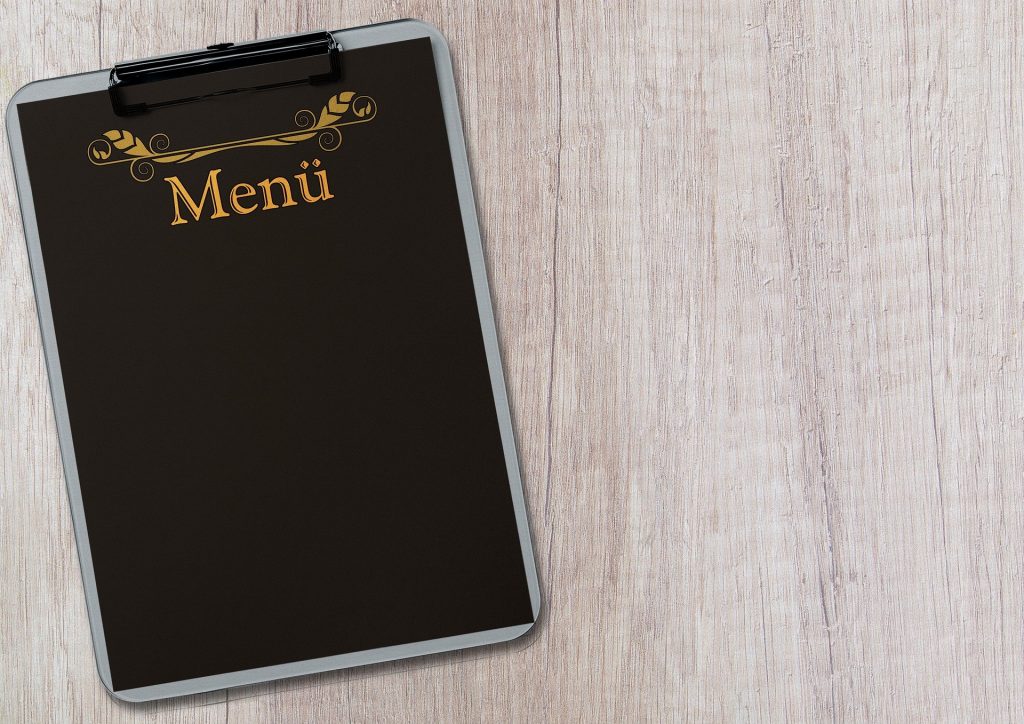
Historical analysis is the study of a particular subject or process in a given period of time. In modern industries, including the food and beverage industry, we generate data extremely fast - almost every minute.
Every new order, number of hourly hours, number of ordered menu items, etc - everything is a piece of data. So it creates a necessity to pay closer attention to your restaurant data analysis and focus especially on your menu - your #1 salesperson.
There are two main directions that will help analyze your menu performance: tracking your restaurant management system and optimizing the look and feel of your menu.
#1 Tracking with your restaurant management software
All new orders and order-related data are registered in your restaurant management system - date, time, recipes, portions, ingredients. That’s a goldmine for you to understand how your menu and menu items separately are performing.
The pieces of data are accumulated day by day and you have the opportunity to perform a historical analysis and start making decisions based on them. For example, based on your New Year sales in the past 3 years, you can understand what menu items people are preferring in that period of time, how much they are ready to pay per person, etc.
One important thing here. Your restaurant management system and your menu should always be aligned. If you make even a small ingredient or price change in your menu, all changes should be applied in the system as well. Otherwise, you simply won’t be able to track your calculations and profit accurately.
#2 Optimizing your menu design and pricing
This is another way to understand how a certain item is performing historically based on its position on the menu.
If you want your guests to choose a certain menu item you should highlight it with a unique description, color or design. Or if you want people to pay less attention to prices, you should avoid adding dollar signs next to the menu items. And most importantly, you should mention the price next to the menu item, without creating a separate column for that.
After making a small change in your menu, you should track how that’s affecting your sales and customer behavior. The process is called A/B testing - you have two versions of a similar design or price or color and you track how profitable each of them is.
Ultimately, you might find out that making your product descriptions more emotion- and benefit-focused is more profitable than simply listing the ingredients. Remember that each change needs at least a few weeks to be validated or rejected. You can’t change your menu font and expect exponential growth the next day.
The Menu Engineering Process
(How to take smart decisions before introducing a new menu)
To make sure that you are making smart decisions on which items to introduce, retain or remove from a menu, keep the following pointers in mind:
1. Calculate recipe costs
2. Do a competitive analysis
3. Understand the recipe category (stars, plow horse, puzzle, dog)
4. Do a comparison between your Actual vs Expected COGS
5. Order smartly
#1 Calculate recipe costs
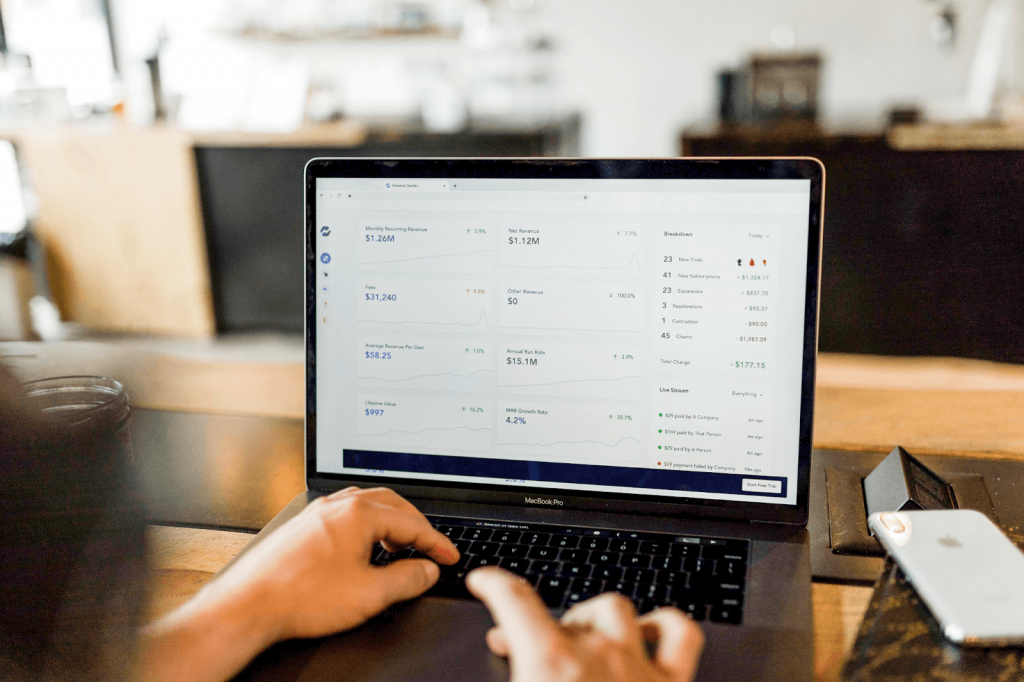
The first step towards analyzing your menu is calculating the costs per menu item. It allows you to understand what the cost of preparing that item is and how you should price it on your menu.
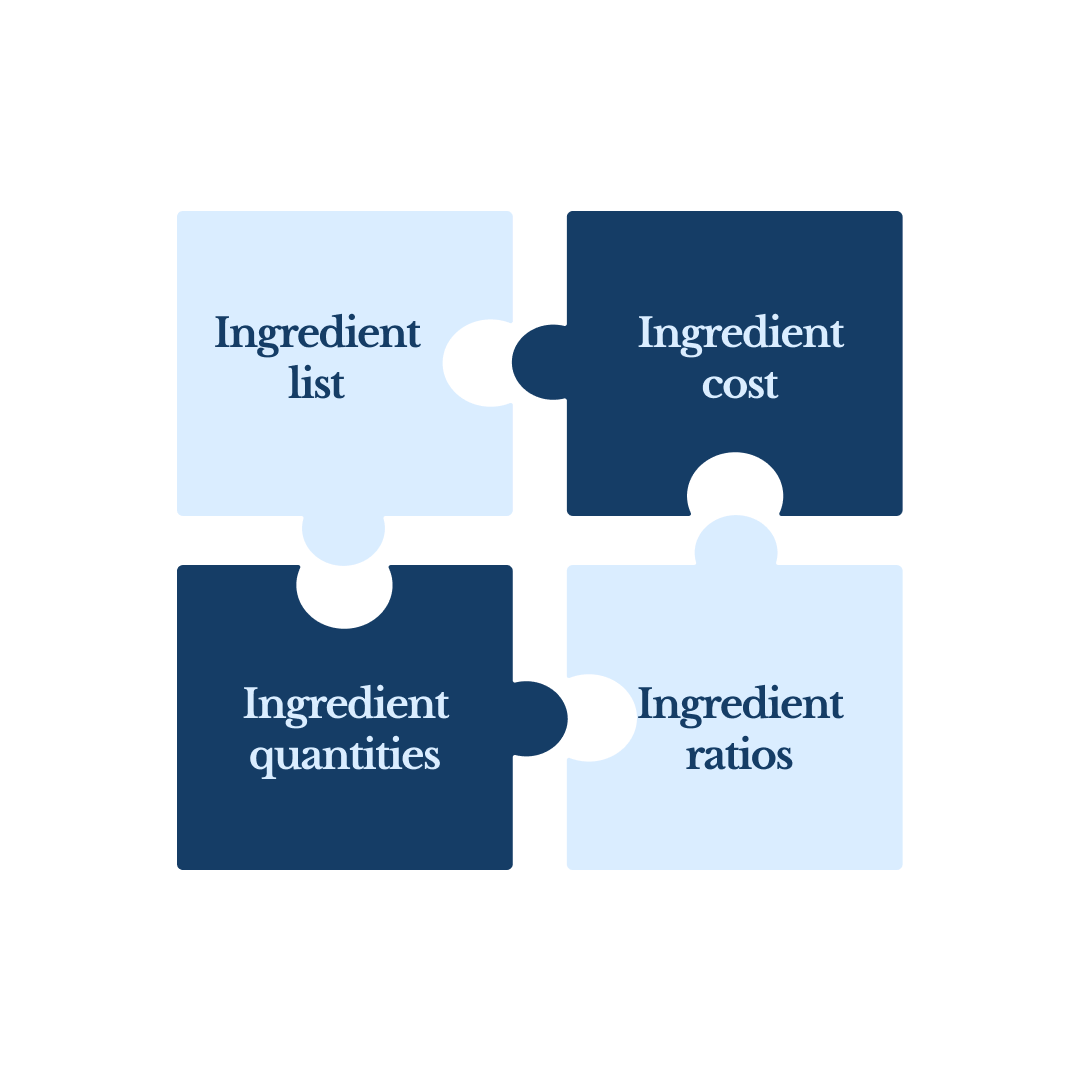
To calculate the recipe cost, follow these steps:
-List all the ingredients that are included in your recipe.
-Write down the quantities of each listed ingredient used in the recipe.
-Mention the cost of ingredients for the suggested quantities against each ingredient.
-Add up the cost of all the ingredients to produce the cost price of the dish.
- Divide the selling price for the dish by the cost price to get your gross profit margin
Let’s consider an example with a club sandwich. The recipe includes
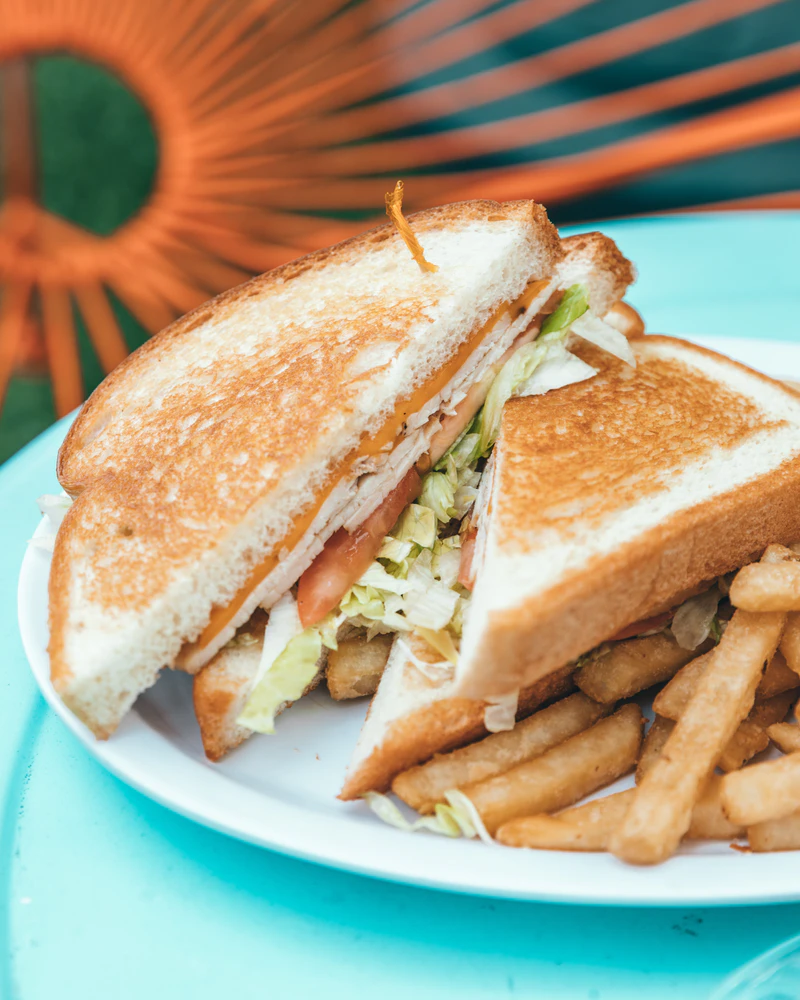
Bread (2 slices) - $0.20
Ham (2 slices) - $1
Cheese (2 slices) - $0.80
Lettuce (2 leaves) - $0.05
Tomato (Half) - $0.10
Mayonnaise (3-4 gram) - $0.10
The total price for this portion is $2.25, not including staff, utility, and other costs. In the restaurant industry, the recipe cost is only 28-35% of the menu price. So if your recipe costs $2.25, the menu price should be around $8-$10, depending on your profit margins and operating costs.
#2 Do a competitive analysis
A menu competitive analysis is a way for you to compare price, portion and in some cases, even presentation of your menu items with the industry standards and with your direct competitors.
You can do that by listing all your menu items according to categories like starters, main courses and further bifurcating them as vegetarian, poultry, seafood and more. You can create a similar list from the menu of your competitors and list down the prices for each menu item. This will help you understand the kind of variety you are able to offer in your menu and will help you make better decisions in terms of menu item selection. It will also help you understand if your menu items are underpriced or overpriced and tweak the pricing accordingly.
Though variety is important in a menu, it is very important to make sure that it is not resulting in you having to over-stack your inventory which is an expense. A highly varied menu may also result in the customers getting confused while ordering.
#3 Understanding the recipe category: Popular vs. Profitable
Not all recipes are created equal. Some of them are popular among the visitors but not very profitable and vice versa. Understanding which category this or that recipe falls under helps you emphasize your profitable offers and ultimately get rid of recipes that are neither profitable, nor popular.

Stars (popular and profitable)
It’s a well-known fact that 80% of restaurant's food sales come from only 16% of the menu items. Stars are your best-selling recipes that bring you the most profits.
There are a few ways to encourage visitors to order your star recipes. Train your servers to suggest these recipes to your guests. Highlight these recipes in your menu so they draw the attention of your customers.
Plow horses (popular, but unprofitable)
These menu items are also called “opportunities'' and your goal is to increase your profit margins, yet maintain their popularity. You can do this by increasing the menu price (of course, not drastically), by decreasing the portion size or by changing/removing ingredients without sacrificing the taste and quality.
Puzzle (profitable, but unpopular)
You’d like your customers to order these recipes but haven’t succeeded yet. Try suggesting them to your guests through servers, highlighting in the menu or creating attractive offers around them. Another option may be decreasing the price to attract more customers - however do that in a way that the profit margins are still attractive, else it defeats the purpose.
Dog (unpopular and unprofitable)
You might want to remove these recipes from your menu. However, if you are not sure, try decreasing their original cost of the item or improving the recipe. Leaving these items in the menu is sometimes ok if they have low labor costs and have the opportunity to use the leftovers.
#4 Do a comparison between your Actual vs Expected COGS
COGS is Cost of Goods Sold, or in simple words, the food cost for any restaurant. When we talk about Actual COGS, we take into account everything from opening stock to purchase, from transfers to closing stock.
To calculate Actual COGS, use the formula:
Actual COGS = (Opening Stock + Purchases + Transfers In – Transfers Out – Closing Stock) / Sales
The actual COGS helps you get a holistic look at not just the recipe cost but your inventory cost as well.
For example:
Opening stock = $1500 (total value of your existing inventory in kitchen/outlet)
Purchase = $300 (total value of what you procure)
Transfers In = $75 (total value of any items you transfer into the outlet from another outlet)
Transfers Out = $45 (total value of any items you transfer out of the outlet to another outlet)
Closing stock = $900 (total value of leftover inventory in kitchen/outlet)
Sales = $10000
Actual COGS = 28.2%
To calculate Expected COGS, use the formula:
Expected COGS = Expected consumption / Sales
Expected consumption is the value based on your recipes. Hence, Expected COGS gives you the insight into only the recipe cost.
For example:
Club sandwich recipe cost = $2.25
Tomato soup recipe cost = $1.50
Chicken salad recipe cost = $2
Chocolate brownie recipe cost = $1.80
Sales = $35
Expected COGS = 21.5%
#5 Order smartly
Your restaurant management system will do the lion’s share of work when it comes to optimizing your food purchases. However, there are a few more tips that you’d like to follow:
1. Make payments using a credit/debit card
Paying your suppliers with a credit or debit card instead of cash has multiple advantages.
Convenience: Carrying a card in your pocket is easier than a big amount of money in cash. Plus, you don’t have to write out a check or go to a bank/ATM to withdraw more money if your funds aren’t sufficient.
Security: Cash is more easily lost or stolen than a card. Besides, even if you have lost your card, you can quickly contact your bank and ask to freeze it. No one will be able to complete transactions with your card and you won’t lose your money.
Transaction tracking: Your bank application allows you to see the full history of your transactions by date, sender/receiver’s name, amount. If you ever need the paper version of the transaction you completed, you can always print it with the help of your app account.
Money saving: If paying via a card wasn’t so lucrative, would businesses offer cashback for every purchase that you make? Paying in cash means you pay more than the actual price and even small differences in prices may ultimately affect your bottom line.
The key takeaway here is to make sure that your restaurant manager uses a card to pay for products and the use of cash is minimized. Suppliers should send appropriate invoices based on the ingredients you have ordered and you should make a transfer to a bank account mentioned in the invoice.
2. Minimize the order amount of perishable ingredients
Bread, dairy products, fish, berries, some fruits spoil and lose their quality quicker than you think.
For example, if you store bananas in the pantry or on the counter, they will last for 2-5 days. Thus, keep your unripe bananas away from the ripe ones not to fasten the ripening process.
As fish contain healthy fats that go bad quickly, even refrigeration doesn’t stop them from spoiling. It is recommended to store fish on ice in a plastic container, pour off water, and eat fish within two days.
Asparagus is another ingredient that has a very short shelf life. When you purchase it, you should trim off the bottoms of the stems, place in wate, and cover it with a plastic bag.
If you want to store chickpea-based hummus in a safe way, keep in an airtight container and keep moisture/contaminants out. However, you should store it no more than 3-4 days as dangerous bacteria will start growing within the snack.
Here’s a list of more ingredients that have short shelf life and you’d better avoid buying them in bulk:
1. Deli meats
2. Parsley
3. Yogurt
4. Mushrooms
5. Broccoli
6. Kale
7. Green beans
8. Avocados
9. Fresh bread
10. Dairy products (milk, cottage and cream cheese)
3. Find cheaper substitutes to expensive ingredients
Well, finding cheaper substitutes isn’t always possible but it will work in most cases. For example, if you are making a smoothie, you can replace fresh strawberries with frozen ones. The taste and the appearance of the drink won’t suffer at all.
Here’s the hack. When fruit and berry prices go down, you can buy them in bulk and freeze. This will make sure you are paying the lowest possible price for the ingredient and can use it anytime, even in winter and charge a high price for the drink.
You can find cheaper substitutes when it comes to species as well. For example, saffron is the most expensive spice and suppliers can sell it for up to $10,000.To achieve a taste as close to saffron as possible, you can mix ¼ teaspoon turmeric and ½ teaspoon paprika.
Cream of Tartar is an expensive ingredient and mostly used in baking. If you don’t want to invest in this ingredient you can simply replace it with baking soda.
Fish sauce is often used in Tahi dishes. But first, it comes at a high price, and second, vegans don’t use it. You can replace it with a soy sauce or teriyaki sauce.
Here’s a longer list of expensive ingredients and their cheaper substitutes:
1. Goat cheese - cream cheese
2. Truffles - porcini mushrooms
3. Vanilla beans - pure vanilla extract
4. Parmesan - Grana Padano
5. Fresh pasta - dried pasta
6. Pancetta - bacon
7. Balsamic vinegar - brown rice vinegar
8. Beluga caviar - hackleback, keluga or ossetra
9. Veal - pork
10. Arrowroot - corn or potato starch
Prashant Kunal, CEO of The Bier Library says :
“EagleOwl meets all our requirements. It has a very simple and easy to use interface, is very intuitive, and the flow is very easy to understand.”
Get table reservations in just a few clicks!
Because a happy customer means good business. Here’s how EagleOwl_Flamingo enables an easy table booking experience.

Ira Jain, Customer Success Manager, EagleOwl
Ira Jain, CSM, EagleOwl
Product Specialist
Get our free Newsletter
Want tips on improving your restaurant efficiency, latest FnB news, etc. straight to your inbox?
Subscribe to our email newsletter!


